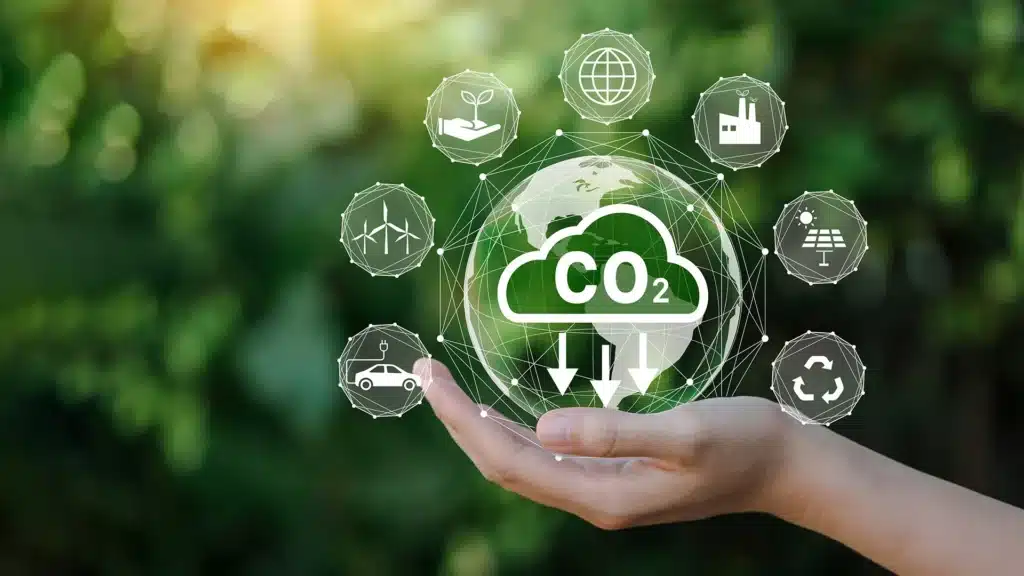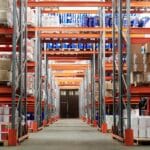In today’s rapidly evolving global landscape, businesses face increasing pressure not only to be profitable but also to be responsible corporate citizens.
This brings us to a crucial question: What exactly is green logistics management, and how can embracing it offer tangible advantages beyond environmental stewardship?
Green logistics management is a comprehensive and strategic approach focused on minimizing the ecological impact of all supply chain activities.
This includes optimizing transportation routes to reduce emissions, designing energy-efficient warehouses, implementing sustainable packaging solutions, managing waste responsibly, and adopting cleaner technologies throughout the entire process.
It represents a fundamental shift in how goods are moved and stored, moving away from purely cost-driven models towards a more holistic view that incorporates environmental sustainability.
As climate change concerns grow, consumer preferences shift towards eco-friendly brands, and regulatory frameworks become stricter, understanding and implementing green logistics practices is no longer just an option – it’s a critical necessity for long-term viability and competitiveness.
In this post, we will define green logistics management in more detail and explore the seven compelling benefits that highlight why your business needs to prioritize it now.
Table of Contents
What is Green Logistics Management?
Green Logistics Management refers to the practice of incorporating environmental considerations into every aspect of logistics operations, with the primary goal of minimizing their ecological impact.
It involves analyzing and optimizing various activities within the supply chain to make them more sustainable, including:
- Transportation: Using fuel-efficient vehicles, optimizing routes to reduce mileage and emissions, exploring alternative fuels (like electric or biofuels), and improving vehicle maintenance.
- Warehousing and Storage: Designing and operating energy-efficient warehouses (e.g., using renewable energy, efficient lighting, better insulation), managing waste, and optimizing space utilization.
- Packaging: Reducing packaging materials, using sustainable or recycled materials, optimizing packaging design to reduce transport volume, and promoting reusable packaging.
- Waste Management: Implementing strategies to reduce waste generated throughout the supply chain, promoting recycling and reuse, and ensuring responsible disposal of unavoidable waste.
- Supply Chain Design: Optimizing the network structure (location of warehouses, production sites) to reduce transport distances and improve overall efficiency and environmental performance.
Read more on The Positive and Negative Impacts of the Amazon Effect on Freight in Dubai
The Benefits of Green Logistics Management

Here’s a brief explanation of how green logistics contributes to each of those benefits, which you could use as the basis for the content under each subheading in your blog post:
Benefit 1: Reduced Operational Costs
Implementing green practices often leads to significant cost savings. This can come from optimizing fuel consumption through better route planning and vehicle maintenance, reducing energy bills in warehouses via efficient lighting and insulation, cutting down on waste disposal fees through recycling and reduction programs, and lowering packaging material costs.
Benefit 2: Increased Efficiency
Sustainability initiatives frequently go hand-in-hand with operational improvements.
Streamlining routes, improving loading/unloading processes, optimizing warehouse layouts, and adopting newer, more efficient technologies can lead to faster turnaround times, reduced idle time, and overall smoother logistics operations.
Benefit 3: Enhanced Brand Reputation and Customer Loyalty
Consumers and business partners are increasingly valuing sustainability. By visibly committing to green logistics, companies can build a positive brand image, attract environmentally conscious customers, and foster loyalty. Demonstrating responsibility resonates well with stakeholders.
Benefit 4: Improved Regulatory Compliance
Governments worldwide are enacting stricter environmental regulations related to emissions, waste disposal, and resource usage in logistics.
Adopting green practices proactively helps companies stay ahead of these requirements, avoiding potential fines, legal issues, and operational disruptions.
Benefit 5: Gaining a Competitive Advantage
Being a leader in green logistics can differentiate your business from competitors. It can open doors to new markets, make you a preferred partner for companies with their own sustainability goals, and even be a deciding factor in winning tenders and contracts.
Benefit 6: Fostering Innovation
The challenge of making logistics greener encourages creativity and the adoption of new technologies and processes.
This can lead to innovations in everything from sustainable packaging materials and alternative fuel vehicles to advanced logistics software and circular economy models.
Benefit 7: Lowered Environmental Impact
This is the most direct benefit. By reducing fuel consumption, minimizing waste, conserving energy, and preventing pollution, green logistics directly contributes to combating climate change, preserving natural resources, and reducing the overall environmental footprint of supply chain activities.
For more information: Amazon Effect on Supply Chain – A Breakthrough in The World of Supply Chain
What are the Challenges of Green Logistics?
Implementing Green Logistics Management, while beneficial, can come with several challenges. Here are some of the key obstacles businesses often face:
- High Initial Investment: Adopting greener technologies, such as electric or alternative fuel vehicles, upgrading warehouse energy systems, or investing in sustainable packaging machinery, often requires significant upfront capital expenditure.
- Lack of Infrastructure and Technology Maturity: Depending on the region, the necessary infrastructure to support green logistics (like EV charging stations, sustainable fuel availability, advanced recycling facilities) might be limited. Some green technologies may also still be developing or not yet widely scalable.
- Complexity of Supply Chains: Modern supply chains are often global and highly complex, involving numerous partners, modes of transport, and locations. Identifying, measuring, and controlling the environmental impact across such intricate networks can be extremely challenging.
- Resistance to Change: Implementing green practices requires changes in processes, technologies, and sometimes even company culture. Employees, management, or supply chain partners may be resistant to adopting new ways of working, especially if they perceive them as more complicated or less efficient in the short term.
- Difficulty in Measurement and Reporting: Accurately measuring the environmental impact of logistics activities (like carbon emissions, waste generated, water usage) can be complex. Establishing standardized metrics and transparent reporting mechanisms across the entire supply chain is a significant hurdle.
- Balancing Green Goals with Traditional Priorities: Sometimes, there can be a perceived conflict between sustainability objectives and traditional logistics priorities such as minimizing costs, maximizing speed, or ensuring flexibility. Finding the right balance requires careful strategic planning and optimization.
- Ensuring Supply Chain Partner Compliance: A company’s supply chain includes many external partners (carriers, suppliers, distributors). Ensuring these partners also adopt and adhere to sustainable practices can be difficult if they lack the resources, motivation, or awareness.
- Lack of Awareness or Expertise: Understanding the best green logistics strategies, available technologies, and effective implementation methods requires specific knowledge and expertise, which may not always be readily available within the organization.
Learn more: The Power of Global Sourcing in Supply Chain Management
What are the Trends in Green Logistics?

Here are some of the key trends currently shaping Green Logistics Management:
- Electrification and Alternative Fuels: There’s a growing push towards electric vehicles (EVs) for last-mile delivery and increasing development and pilot programs for electric and hydrogen fuel cell trucks, vans, and even port equipment. Alongside electrification, the use of biofuels and other low-carbon fuels for modes like shipping and aviation, where electrification is more challenging, is also trending upwards.
- Advanced Route Optimization and Load Planning: Companies are leveraging sophisticated software powered by AI and machine learning to optimize delivery routes in real-time, reduce mileage, minimize idling, and maximize vehicle load capacity. This directly cuts fuel consumption and emissions per unit transported.
- Sustainable and Circular Packaging: The focus is shifting towards minimizing packaging materials, using recycled or sustainably sourced content, designing packaging for recyclability or compostability, and implementing reusable packaging systems (like returnable containers) to reduce waste throughout the supply chain.
- Smart and Energy-Efficient Warehousing: New and renovated logistics facilities are being designed with energy efficiency in mind, incorporating features like LED lighting, smart HVAC systems, on-site renewable energy generation (solar panels), and automated systems that reduce energy consumption.
- Enhanced Supply Chain Visibility and Reporting: Technology like IoT sensors, telematics, and blockchain are providing greater transparency into the environmental performance of logistics operations. This data is crucial for accurate carbon footprint measurement, reporting, identifying areas for improvement, and ensuring compliance across complex supply chains.
- Growing Adoption of Circular Economy Principles: Logistics is becoming integral to enabling circular economy models, which focus on keeping products and materials in use for as long as possible. This involves developing efficient reverse logistics systems for returns, repairs, remanufacturing, and recycling.
- Increased Collaboration: Businesses are recognizing that greening the entire supply chain requires collaboration. Trends include partnerships between shippers and carriers to use greener transport options, industry-wide initiatives to develop sustainable standards, and shared logistics networks to optimize capacity utilization.
- Focus on Last-Mile Sustainability: With the rise of e-commerce, the environmental impact of last-mile delivery in urban areas is a major concern. Trends include using electric vans, cargo bikes, establishing urban micro-fulfillment centers, and optimizing delivery density.
For more information: Exploring Global Sourcing Advantages and Disadvantages
To summarize, the adoption of green logistics management is clearly far more than just an environmental trend; it is a powerful strategic lever offering multifaceted benefits that directly contribute to your business’s success and resilience.
We’ve discussed how prioritizing sustainability in your supply chain can lead to substantial cost reductions through greater efficiency and reduced waste, enhance your brand’s reputation among increasingly conscious consumers, ensure compliance with current and future environmental regulations, and even drive innovation in operational processes.
Embracing green logistics means making a forward-thinking investment in your company’s future, mitigating risks, and contributing positively to the planet.
While the transition may present challenges, the long-term advantages in terms of financial performance, operational excellence, and societal contribution are undeniable.
Ready to explore how green logistics management can be tailored to your specific business needs and supply chain complexities? Contact Z Line Logistics today to speak with our experts and discover how we can partner with you to design and implement sustainable logistics solutions to position your business as a leader in responsible commerce.




